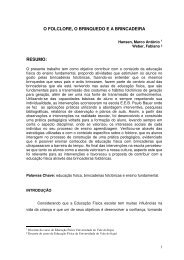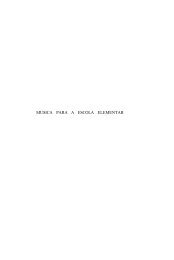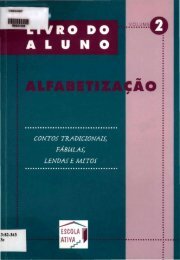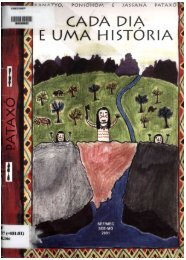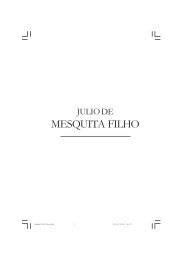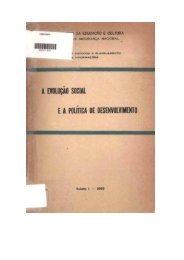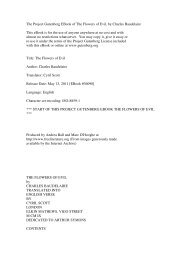A History of English Literature
A History of English Literature
A History of English Literature
Create successful ePaper yourself
Turn your PDF publications into a flip-book with our unique Google optimized e-Paper software.
5. Still another, minor, innovation <strong>of</strong> Wyatt was the introduction into<br />
<strong>English</strong> verse <strong>of</strong> the Horatian 'satire' (moral poem, reflecting on current<br />
follies) in the form <strong>of</strong> three metrical letters to friends. In these the<br />
meter is the _terza rima_ <strong>of</strong> Dante.<br />
Wyatt's work was continued by his poetical disciple and successor, Henry<br />
Howard, who, as son <strong>of</strong> the Duke <strong>of</strong> Norfolk, held the courtesy title <strong>of</strong> Earl<br />
<strong>of</strong> Surrey. A brilliant though wilful representative <strong>of</strong> Tudor chivalry, and<br />
distinguished in war, Surrey seems to have occupied at Court almost the<br />
same commanding position as Sir Philip Sidney in the following generation.<br />
His career was cut short in tragically ironical fashion at the age <strong>of</strong><br />
thirty by the plots <strong>of</strong> his enemies and the dying bloodthirstiness <strong>of</strong> King<br />
Henry, which together led to his execution on a trumped-up charge <strong>of</strong><br />
treason. It was only one <strong>of</strong> countless brutal court crimes, but it seems the<br />
more hateful because if the king had died a single day earlier Surrey could<br />
have been saved.<br />
Surrey's services to poetry were two: 1. He improved on the versification<br />
<strong>of</strong> Wyatt's sonnets, securing fluency and smoothness. 2. In a translation <strong>of</strong><br />
two books <strong>of</strong> Vergil's 'Aneid' he introduced, from the Italian, pentameter<br />
blank verse, which was destined thenceforth to be the meter <strong>of</strong> <strong>English</strong><br />
poetic drama and <strong>of</strong> much <strong>of</strong> the greatest <strong>English</strong> non-dramatic poetry.<br />
Further, though his poems are less numerous than those <strong>of</strong> Wyatt, his range<br />
<strong>of</strong> subjects is somewhat broader, including some appreciative treatment <strong>of</strong><br />
external Nature. He seems, however, somewhat less sincere than his teacher.<br />
In his sonnets he abandoned the form followed by Wyatt and adopted (still<br />
from the Italian) the one which was subsequently used by Shakspere,<br />
consisting <strong>of</strong> three independent quatrains followed, as with Wyatt, by a<br />
couplet which sums up the thought with epigrammatic force, thus: _a b a b<br />
c d c d e f e f g g_.<br />
Wyatt and Surrey set a fashion at Court; for some years it seems to have<br />
been an almost necessary accomplishment for every young noble to turn <strong>of</strong>f<br />
love poems after Italian and French models; for France too had now taken up<br />
the fashion. These poems were generally and naturally regarded as the<br />
property <strong>of</strong> the Court and <strong>of</strong> the gentry, and circulated at first only in<br />
manuscript among the author's friends; but the general public became<br />
curious about them, and in 1557 one <strong>of</strong> the publishers <strong>of</strong> the day, Richard<br />
Tottel, securing a number <strong>of</strong> those <strong>of</strong> Wyatt, Surrey, and a few other noble<br />
or gentle authors, published them in a little volume, which is known as<br />
'Tottel's Miscellany.' Coming as it does in the year before the accession<br />
<strong>of</strong> Queen Elizabeth, at the end <strong>of</strong> the comparatively barren reigns <strong>of</strong> Edward<br />
and Mary, this book is taken by common consent as marking the beginning <strong>of</strong><br />
the literature <strong>of</strong> the Elizabethan period. It was the premature predecessor,<br />
also, <strong>of</strong> a number <strong>of</strong> such anthologies which were published during the<br />
latter half <strong>of</strong> Elizabeth's reign.<br />
THE ELIZABETHAN PERIOD. [Footnote: Vivid pictures <strong>of</strong> the Elizabethan period<br />
are given in Charles Kingsley's 'Westward, ho!' and in Scott's<br />
'Kenilworth.' Scott's 'The Monastery' and 'The Abbot' deal less<br />
successfully with the same period in Scotland.] The earlier half <strong>of</strong><br />
Elizabeth's reign, also, though not lacking in literary effort, produced no<br />
work <strong>of</strong> permanent importance. After the religious convulsions <strong>of</strong> half a<br />
century time was required for the development <strong>of</strong> the internal quiet and<br />
confidence from which a great literature could spring. At length, however,<br />
the hour grew ripe and there came the greatest outburst <strong>of</strong> creative energy<br />
in the whole history <strong>of</strong> <strong>English</strong> literature. Under Elizabeth's wise guidance<br />
the prosperity and enthusiasm <strong>of</strong> the nation had risen to the highest pitch,<br />
and London in particular was overflowing with vigorous life. A special





